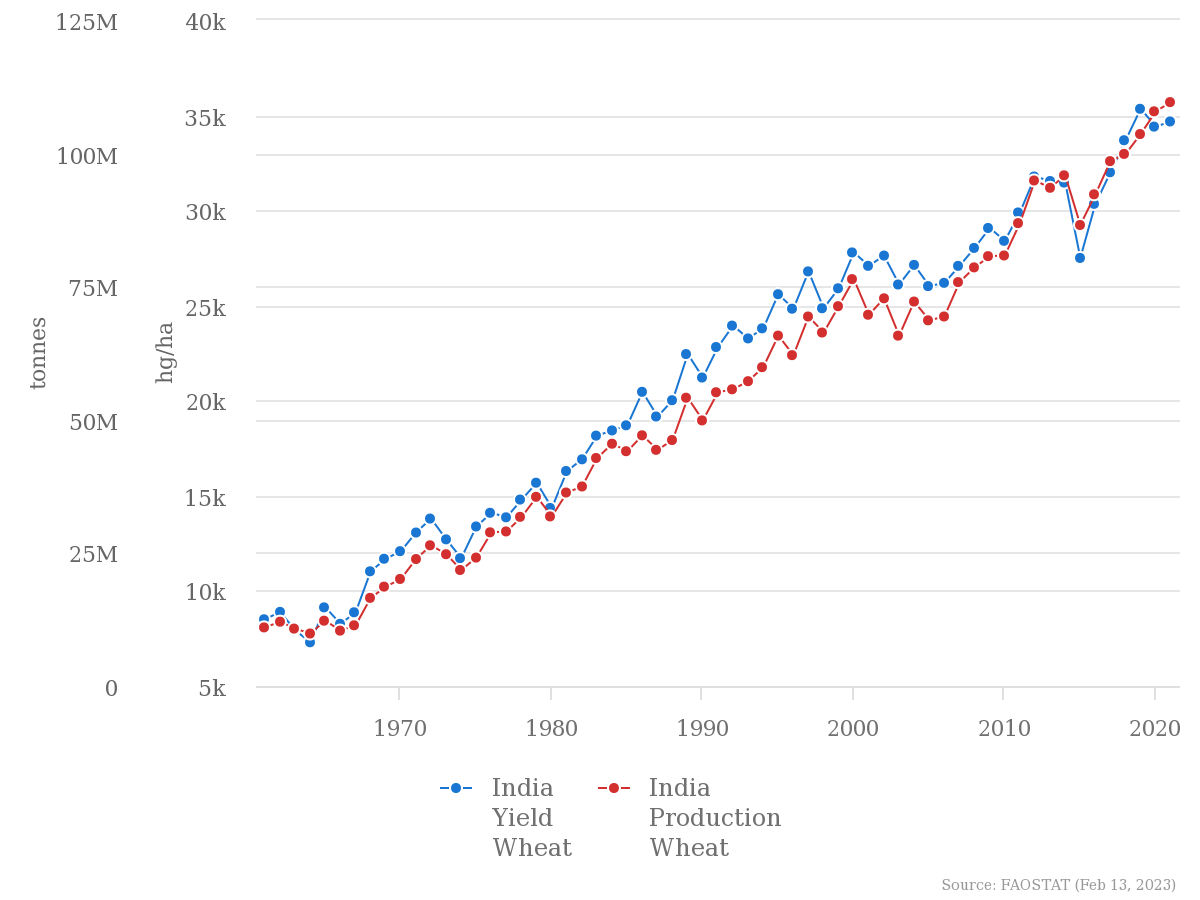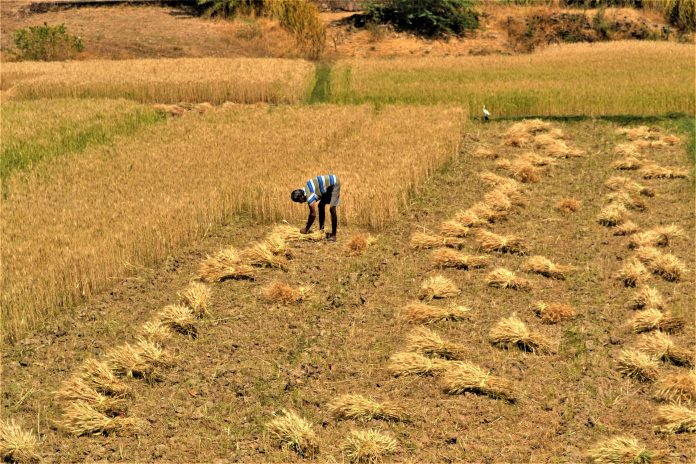A recent Bloomberg article claims that global warming is causing more frequent and intense extreme weather, like drought and heavy rains, in India. The author, Rajesh Kumar Singh, says these weather conditions are “eroding farm productivity.” These claims are false. Recent weather events not outside the range of natural variability for India, nor are there indications that crop production is suffering long term due to the last hundred-plus years of global warming.
Singh writes in the paywalled Bloomberg article, “Global Warming Making India Vulnerable to Extreme Weather Events,” that India is “likely” to see greater numbers and intensity of extreme weather. These include “intense heat waves, heavy flooding and severe drought that pose challenges to food and energy security for the second-most populous nation.” He also quotes India’s Secretary of the Ministry of Earth Sciences, M. Ravichandran, as saying that weather extremes are becoming more common, that “hot is becoming hotter and cold is becoming colder[.]”
The article echoes a popular claim of climate-induced “weather whiplash,” or that there are suddenly wide fluctuations in regional weather conditions like drought and heavy rain, but these conditions are not actually new to India. No data is referenced that would indicate worsening trends for both drought and heavy rain in India, and there does not appear to be any.
The Indian ocean experiences a temperature gradient phenomena called the Indian Ocean Dipole (IOD), discussed briefly in a Climate Realism post, here, which is comparable and possibly directly connected to the Pacific’s El Niño Southern Oscillation (ENSO).
ENSO is natural, and impacts weather around the world, but especially in Pacific-bordering nations, and Asia. A negative-phase IOD brings heavy rain to parts of Australia, but is drier in India. When combined with the monsoon season, the appearance of wild swings from drought to floods may be more prevalent. These conditions can be exacerbated or moderated, depending on the phase of ENSO.
Singh even notes that Ravichandran acknowledges the impact of natural ENSO patterns, with a single short sentence: “There’s also a possibility of the El Niño weather pattern this year, he said.” This is supposed to imply that damaging heat could get worse, as the past few years have seen several La Niña (cold phases) in a row.
Although it is true that India’s wheat crops were impacted this past year by “deadly heat waves” and drought, as specifically mentioned by Singh in the article, a single year’s decline is no proof of a long-term climate change induced trend. There is no indication from the crop production and yield records suggesting the “weather whiplash” has been causing crop failures over time.
Data from the United Nations Food and Agriculture Organization (FAO) show that, despite media claims to the contrary, wheat production and yields have been rapidly increasing in recent decades. Although not every year is a bumper crop the trends are sharply upwards with India’s wheat production setting new records five times in the last five years for which we have data, and three times for yield during the same period.” (See figure below)

As reported in Climate Realism, here, and here, India’s weather is not overly alarming, nor is the country seeing negative trends in crop production as the earth modestly warms.
The key word to note in the Bloomberg article is that India is “likely” to see worse weather over time, but such predictions are based on computer models which are provably flawed, as discussed here and here. Indeed, despite the Earth warming about 1.2 degrees Celsius since before the Industrial Revolution, no trend or worsening weather or more erratic weather patterns has been measured so far. Amid modest warming, crop production has trend sharply upwards for decades, which is something to celebrate, seeing as India is the second most populous country in the world, at 1.3 billion people.

















